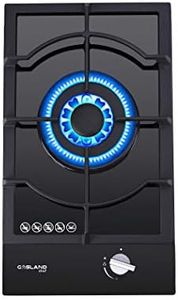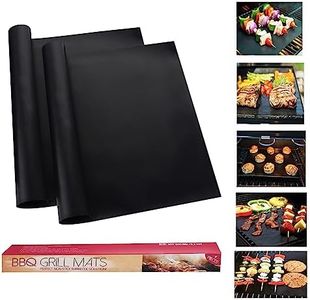We Use CookiesWe use cookies to enhance the security, performance,
functionality and for analytical and promotional activities. By continuing to browse this site you
are agreeing to our privacy policy
4 Best 30 Gas Range
From leading brands and best sellers available on the web.Buying Guide for the Best 30 Gas Range
Choosing a 30-inch gas range can feel a bit overwhelming because there are many features and specifications to consider beyond just the width. It's important to focus on how you plan to use your range, such as cooking for a large family, baking often, or needing extra power for quick meals. Carefully looking at the specs will help you find something that is safe, efficient, and enjoyable to use in your kitchen for years to come.Oven CapacityOven capacity tells you how much space is inside the oven, usually measured in cubic feet. This matters because a larger oven allows you to cook bigger meals or multiple dishes at once, which is great if you entertain often or have a large household. Oven capacities for 30-inch ranges usually fall between 4.5 and 6 cubic feet. Smaller ovens heat up a bit faster and use less energy, which is handy for singles or couples, while bigger units suit people who like to bake or roast big items, such as turkeys. Think about the size of the dishes you usually make and pick a size that fits your cooking habits.
Cooktop BurnersThe number and type of burners determine how many pots and pans you can use at once and how versatile your cooking can be. Most 30-inch gas ranges offer four or five burners. Some include extra-high heat burners for boiling or stir-frying, while others have simmer burners for delicate tasks like melting chocolate. If you often multitask or prepare elaborate meals, having a fifth burner or specialty burner can help. If you mostly make simple meals, four standard burners may be all you need.
BTU OutputBTU stands for British Thermal Unit and measures how much heat a burner can produce. Higher BTUs mean more powerful burners that boil water and sear meats faster, while lower BTUs are better for simmering and gentle cooking. Main burners on gas ranges range from about 5,000 to 18,000 BTUs. If you make stir-fried dishes or want fast boiling, look for at least one high-BTU burner. For slower cooking like sauces, make sure there’s a low-BTU option. Think about your usual meals to decide if more power or more delicate control is better for you.
Oven FeaturesModern gas ranges offer various oven features like convection (which circulates hot air for even baking), self-cleaning modes, and different rack positions. Convection is great if you bake cookies or cakes a lot as it helps them cook evenly. Self-cleaning saves time and effort, but requires high heat cycles. Adjustable racks let you cook multiple dishes. Pick oven features based on what will make your cooking experience easier or more enjoyable.
Control TypeControl type refers to whether the knobs and buttons are manual or digital. Manual controls are straightforward and rarely break, making them easy to use for most people. Digital controls can offer more features like timers and presets, but might be more complex. Choose based on your comfort with technology and how many extra features you want.
Safety FeaturesSafety features can include auto shut-off, child lock, or flame failure protection (which turns off the gas if the flame goes out). These are especially important if you have children at home or want extra peace of mind. Decide which features matter most for your situation to help you choose wisely.
Cleaning and MaintenanceSome gas ranges have sealed burners or smooth surfaces that make cleaning easier, as spills don’t get stuck under the burners. Others have removable grates or allow the oven door to come off for better access. If keeping things tidy is important to you, pay attention to these details and look for features that make cleanup as painless as possible.



